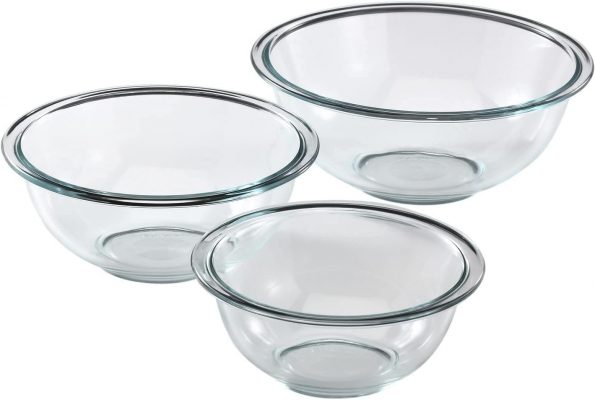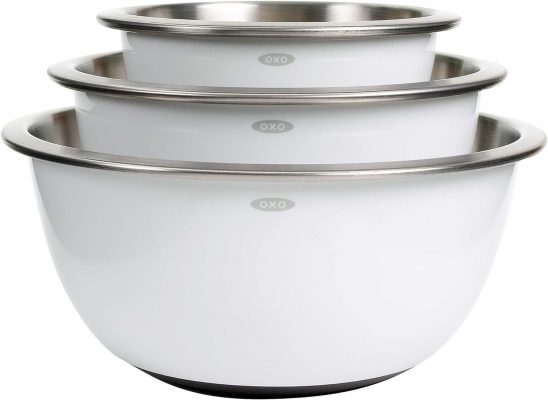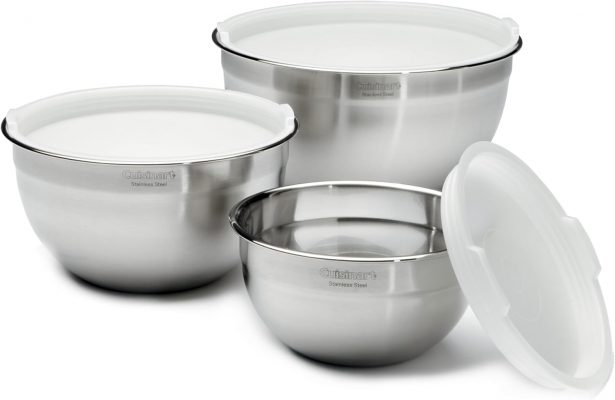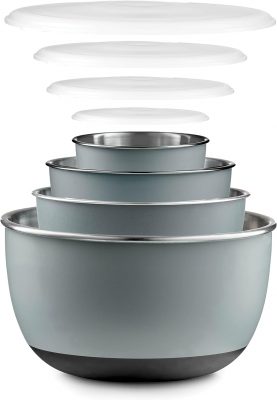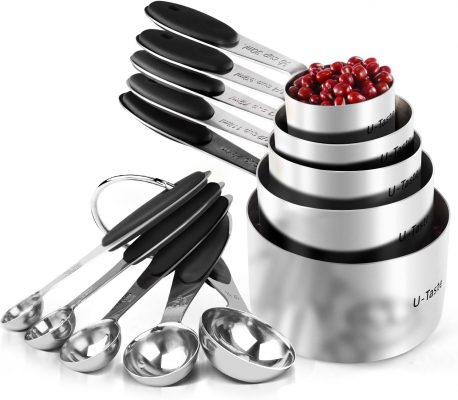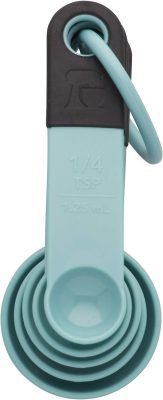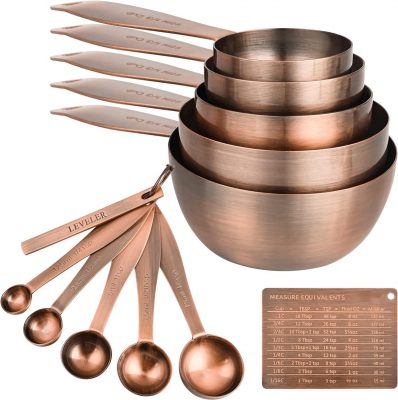Best Baking Tools for Beginners
Baking is more than just following a recipe—it’s a creative process that allows you to turn simple ingredients into something amazing. Just like a painter needs brushes and a sculptor needs chisels, bakers rely on their tools to achieve great results. However, for those just starting out, the wide variety of baking tools can be confusing and even intimidating. With so many options, it’s easy to wonder what’s really necessary and what’s just extra. But the good news is that you don’t need an entire kitchen full of gadgets to get started. A few well-chosen essentials can go a long way.
Whether you’re mixing up your first batch of cookies, trying your hand at cakes, or venturing into homemade bread, the right tools can make a world of difference. Investing in quality basics will not only make the process smoother, but also help you avoid common baking frustrations, like batter sticking to the pan or uneven cooking. In this guide, we’ve simplified everything for you, focusing on the must-have tools that every beginner should have in their kitchen. With these essentials, you’ll be well-equipped to bake like a pro in no time.
Mixing Bowls 🥣
Mixing bowls are one of the most basic yet essential tools in any baker’s kitchen. Whether you’re whipping up cake batter, tossing together ingredients for cookies, or letting bread dough rise, a good set of mixing bowls will be used time and time again. Choosing the right mixing bowls may seem straightforward, but there are several factors to consider that can make your baking experience easier, cleaner, and more efficient.
Material Options
Mixing bowls come in a variety of materials, each with its own benefits. Here’s a breakdown of the most common types:
Stainless Steel: These are lightweight, durable, and often the go-to choice for most bakers. They don’t chip or break easily and are resistant to rust, making them long-lasting. Stainless steel is also great for recipes that require chilling ingredients, as it retains cold temperatures well. The only downside is that they’re not microwave-safe.
Glass: Glass bowls are heavier but offer several advantages. You can see through them, which is helpful when mixing to ensure ingredients are fully incorporated. They’re microwave-safe and can handle both hot and cold mixtures. However, glass can break or chip more easily, so they require a bit more care.
Plastic: Lightweight and often more affordable, plastic bowls are a common choice for beginners. They’re microwave-safe and dishwasher-friendly, but be mindful that plastic can absorb odors or stains over time. It’s also not ideal for mixing hot ingredients.
Size Variety
When it comes to mixing bowls, size matters. Having a set of bowls in different sizes ensures you’re prepared for any recipe. Here’s why:
- Small Bowls: These are perfect for whisking small amounts of ingredients like eggs, sauces, or dressings.
- Medium Bowls: Great for mixing cookie dough, cake batter, or prepping ingredients.
- Large Bowls: Ideal for bread dough, large batches of batter, or when you’re mixing multiple ingredients at once.
Investing in a nesting set—where bowls of various sizes stack within each other—saves kitchen space and ensures you always have the right size for the task.
Features to Consider
Not all mixing bowls are created equal. Here are a few features that can make your life in the kitchen a lot easier:
Nonslip Bottoms: These bowls come with rubberized bases that grip the countertop, so you don’t have to worry about the bowl sliding around while you mix. This is especially useful when whisking or stirring vigorously.
Handles and Spouts: Some mixing bowls come with built-in handles and pour spouts, which make transferring batter or liquids much easier. This can be a lifesaver when you’re trying to pour neatly into muffin tins or cake pans.
Lids: If you’re someone who likes to prep ingredients in advance, bowls with matching lids are a great choice. You can mix your dough or batter, pop a lid on, and refrigerate it without the need for plastic wrap or foil. Plus, they’re handy for storing leftovers!
Stability and Depth
The shape of your bowl can affect how well you mix. Look for bowls with a deep enough shape to prevent ingredients from splashing out as you stir. Bowls that are too shallow can make a mess and require more caution when mixing.
Easy Cleanup
One last thing to consider is how easy it is to clean your bowls. Most glass, stainless steel, and plastic bowls are dishwasher-safe, which is a big plus when it comes to post-baking cleanup. Just be careful with certain plastic bowls, as they can warp over time if exposed to high dishwasher heat frequently.
Choosing the right set of mixing bowls is all about finding the balance between function, durability, and comfort. Whether you’re stirring, whisking, or folding ingredients, having the right mixing bowl can make the process smooth and enjoyable. By investing in a good set with the right features, you’ll not only make your baking more efficient but also more fun!
Pyrex is a trusted name in kitchenware, and their glass mixing bowl set is no exception. These bowls are made from durable, high-quality glass that’s safe for use in the oven, microwave, freezer, and dishwasher. With their simple design and clear transparency, they’re great for mixing and storing all types of ingredients.
- Material: Glass
- Set Includes: 3 bowls (1 quart, 1.5 quarts, 2.5 quarts)
Bakers who prefer the visibility of glass and need bowls that can handle both cold and hot temperatures. Perfect for mixing and serving alike.
Pros:
- Microwave and Oven Safe: You can heat ingredients directly in the bowl, saving you from having to transfer them to another dish.
- Sturdy and Durable: These bowls are heavy-duty and less likely to chip or crack compared to other glass options.
- Clear Glass: Seeing your ingredients as you mix helps ensure everything is well-incorporated.
Cons:
- Heavy: Glass bowls can be a bit on the heavy side, making them harder to handle, especially when filled.
- Breakable: While sturdy, they are still made of glass, so extra care is needed to avoid accidents.
The OXO Good Grips stainless steel mixing bowls are well-loved for their smart design and thoughtful features. These bowls come with non-slip bottoms, which help keep the bowls stable while you mix. They’re deep enough to prevent splashing, making them ideal for mixing wet and dry ingredients. The stainless steel material is durable, lightweight, and stain-resistant.
- Material: Stainless Steel
- Set Includes: 3 bowls (1.5 quarts, 3 quarts, 5 quarts)
Beginners who want a lightweight, sturdy, and reliable set of bowls that won’t slip or slide during mixing.
Pros:
- Non-Slip Bottoms: These bowls stay put on the countertop, even during vigorous mixing.
- Lightweight: Easier to handle than glass or ceramic bowls, making them great for daily use.
- Deep and Tall: The deeper design reduces mess when stirring larger amounts.
Cons:
- Not Microwave Safe: As with any metal bowl, you can’t use these in the microwave.
- No Lids: The set doesn’t come with lids, which limits their versatility for storage.
This Cuisinart mixing bowl set combines the durability of stainless steel with the convenience of included lids. These bowls are perfect for prepping ingredients in advance, as the tight-fitting lids allow you to store mixtures directly in the fridge. The bowls are dishwasher-safe and resistant to rust, making them easy to maintain. They’re also deep, which prevents ingredients from spilling over.
- Material: Stainless Steel
- Set Includes: 3 bowls (1.5 quarts, 3 quarts, 5 quarts) + Lids
Bakers who want versatile, long-lasting bowls with the added convenience of lids for easy storage.
Pros:
- Lids Included: The lids are a great feature for storing leftovers or prepped ingredients without needing to transfer to another container.
- Durable and Rust-Resistant: Stainless steel ensures long-lasting use, and these bowls are less likely to dent or crack.
- Dishwasher Safe: Cleaning is a breeze since both the bowls and lids can be popped into the dishwasher.
Cons:
- Lids Are Plastic: While the bowls are top-notch, the lids are made of plastic, which can warp if exposed to high heat.
- Slightly Heavier: Though not as heavy as glass, these bowls are a bit weightier than other stainless steel options due to their sturdier build.
The FineDine set offers excellent value with five different-sized stainless steel bowls, each with airtight lids. This set is perfect for beginners who want versatility in size options and reliable storage. The bowls stack neatly for space-saving storage and are easy to clean. The airtight lids ensure that your ingredients stay fresh when stored, making this set a solid choice for both prep and storage.
- Material: Stainless Steel
- Set Includes: 5 bowls (¾ quarts, 1.5 quarts, 3 quarts, 4 quarts, 5 quarts) + Airtight Lids
Anyone looking for a large, versatile set of bowls with lids, especially if you plan to do a lot of meal prep or storage.
Pros:
- Five Different Sizes: A wide range of sizes ensures you’ll always have the perfect bowl for any task.
- Airtight Lids: Keep your ingredients fresh for longer with these tight-fitting lids.
- Space-Saving: The bowls nest together, taking up minimal space in your kitchen cabinets.
Cons:
- Lids Can Be Tricky: Some users report that the lids can be tough to snap on or remove at first.
- Not Non-Slip: Unlike the OXO bowls, these don’t have a non-slip bottom, so they may move around on smooth surfaces.
Each of these mixing bowl sets offers unique features to suit different needs. If you’re looking for versatility and durability, the Cuisinart Stainless Steel Bowls with Lids are an excellent choice. For bakers who want a lightweight, sturdy option, the OXO Good Grips Stainless Steel Bowls with their non-slip base are hard to beat. If you prefer glass, the Pyrex Glass Set is a timeless classic that offers durability and clarity. And if you want the best bang for your buck with plenty of size options, the FineDine Set has you covered.
Measuring Cups and Spoons 🥄
If there’s one thing that sets baking apart from cooking, it’s the need for precision. While cooking allows for a bit of creative freedom with ingredients, baking requires exact measurements to achieve the right texture, flavor, and structure. This is why having a reliable set of measuring cups and spoons is an absolute must for beginners and experienced bakers alike. Let’s dive deeper into why these tools are so important and what to consider when choosing the right set for your kitchen.
Why Precision Matters in Baking
In baking, even a slight variation in ingredient measurements can make a huge difference. Too much flour, and your cookies will turn out dry; too little baking powder, and your cake won’t rise properly. That’s why using measuring cups and spoons designed specifically for dry or liquid ingredients is essential. They take the guesswork out of measuring, ensuring your recipe turns out exactly as intended.
Types of Measuring Tools
There are two main types of measuring tools that every baker needs: dry measuring cups and liquid measuring cups. Though they might seem interchangeable, they’re designed for different purposes.
Materials:
- Plastic: Lightweight and affordable, but may warp or stain over time.
- Metal: Durable and often more precise, as they hold their shape well.
- Ceramic: Aesthetically pleasing and sturdy, but can chip or break easily.
Liquid Measuring Cups
Liquid measuring cups are for ingredients like water, milk, and oil. These cups are usually made from glass or plastic and come with measurement markings on the side for easy reading. They often have a spout for pouring, making them ideal for transferring liquids without spills.
Materials:
- Plastic: Lightweight and affordable, but may warp or stain over time.
- Metal: Durable and often more precise, as they hold their shape well.
- Ceramic: Aesthetically pleasing and sturdy, but can chip or break easily.
Materials:
- Plastic: Lightweight and affordable, but may warp or stain over time.
- Metal: Durable and often more precise, as they hold their shape well.
- Ceramic: Aesthetically pleasing and sturdy, but can chip or break easily.
Materials:
- Plastic: Lightweight and affordable, but may warp or stain over time.
- Metal: Durable and often more precise, as they hold their shape well.
- Ceramic: Aesthetically pleasing and sturdy, but can chip or break easily.
In addition to cups, a good set of measuring spoons is essential for accurately measuring smaller amounts of ingredients like baking powder, salt, and vanilla extract. These spoons come in sets that typically range from ¼ teaspoon to 1 tablespoon.
Features to Look For:
- Clear Markings: Make sure the measurement labels are easy to read and won’t fade with time.
- Nesting Design: Spoons that nest together save space and are easy to store.
- Stainless Steel vs. Plastic: Stainless steel is more durable, but plastic spoons are lightweight and less expensive.
How to Measure Correctly
Using measuring cups and spoons correctly is key to successful baking. Here’s a quick guide on how to get accurate measurements:
Dry Ingredients
- Flour: Spoon the flour into the measuring cup and level it off with a flat edge. Never scoop directly from the bag, as this packs the flour down and can lead to using too much.
- Sugar: For granulated sugar, simply scoop and level. For brown sugar, pack it tightly into the cup unless otherwise stated.
- Baking Powder and Soda: Use the flat edge of a knife to level off the ingredient in your measuring spoon for precision.
Liquid Ingredients
- Pour liquid into a liquid measuring cup until it reaches the desired line. Make sure to check the measurement at eye level to avoid overfilling or underfilling.
- For sticky ingredients like honey or syrup, lightly grease the measuring cup beforehand to help the liquid slide out more easily.
Tips for Choosing the Right Set
Here are some factors to consider when choosing your set of measuring cups and spoons:
1. Accuracy
Accuracy is the most important factor when selecting measuring tools. Look for sets with well-defined markings that are easy to read. Stainless steel sets are often the most accurate and hold up well over time.
2. Durability
Stainless steel measuring cups and spoons tend to be the most durable and resistant to bending or warping. Plastic is lighter and more affordable but may not last as long, especially if used in high-heat situations (like measuring hot liquids).
3. Versatility
Some sets come with extra sizes, such as ⅛ cup or ¾ teaspoon, which can be handy if you bake frequently. Additionally, liquid measuring cups with multiple measurements (cups, ounces, milliliters) offer versatility for a wide range of recipes.
4. Easy to Clean
Look for dishwasher-safe options to make cleanup easier, especially when dealing with sticky ingredients like honey or peanut butter. Some plastic sets can warp in the dishwasher, so check the manufacturer’s recommendations.
5. Storage
Choose a set that is easy to store. Many measuring cups and spoons are designed to nest together, saving precious drawer or cabinet space. Some even come with hooks or rings to keep the set organized and accessible.
Extra Tips for Beginners
- Double-check measurements: When baking, it’s always better to measure carefully than to eyeball it. Precision is key!
- Use separate tools for wet and dry ingredients: This ensures you get the most accurate results. Dry measuring cups don’t account for the slight surface tension of liquids, and liquid measuring cups aren’t designed to be leveled off like dry ones.
- Avoid measuring over the mixing bowl: To prevent accidentally spilling too much of an ingredient into your recipe, measure over the counter or sink.
Having the right set of measuring cups and spoons can make all the difference in your baking. They are your tools for precision, ensuring every recipe turns out just right. From dry measuring cups for flour and sugar to liquid cups for water and oil, investing in a good set will save you time and frustration in the kitchen. And don’t forget those measuring spoons for the perfect dash of salt or sprinkle of baking powder! With the right tools, baking can be fun, easy, and—most importantly—delicious.
When it comes to baking, precision is key. Having reliable measuring cups and spoons can be the difference between a perfectly risen cake and a baking flop. We’ve reviewed the top four measuring cups and spoons sets that offer durability, accuracy, and ease of use for beginners and pros alike. Let’s take a closer look at each one!
The U-Taste measuring set stands out for its broad range of sizes, giving you more versatility in your measurements. Made from 18/8 food-grade stainless steel, these cups and spoons are rust-resistant and dishwasher-safe. The long handles are engraved with measurements that won’t fade or wear off, and the cups have smooth, flat rims for easy leveling.
- Material: 18/8 Stainless Steel (food-grade)
- Set Includes: 7 measuring cups (⅛ cup, ¼ cup, ⅓ cup, ½ cup, ⅔ cup, ¾ cup, 1 cup), 6 measuring spoons (⅛ tsp, ¼ tsp, ½ tsp, 1 tsp, ½ tbsp, 1 tbsp)
Home bakers who want a versatile, durable set with additional size options to meet all recipe needs.
Pros:
- More Size Options: This set includes ⅛ cup and ¾ cup sizes, which are less common but super handy in recipes.
- Engraved Measurements: The measurement marks are etched into the metal, so they’ll never wear off.
- Heavy-Duty: The stainless steel construction ensures these tools will last for years without bending or breaking.
- Dishwasher Safe: Easy to clean and maintain.
Cons:
- No Grips: The handles, though sturdy, can feel slippery when wet, as there’s no added grip.
- No Pouring Spout: Unlike some other sets, these cups don’t have spouts for pouring liquids cleanly.
The KitchenAid Classic set is a budget-friendly option made from high-quality BPA-free plastic. The cups and spoons are lightweight, easy to clean, and come with clear, bold measurements that are easy to read. While they may not be as long-lasting as stainless steel, they’re perfect for those looking for an affordable and reliable set.
- Material: BPA-Free Plastic
- Set Includes: 4 measuring cups (¼ cup, ⅓ cup, ½ cup, 1 cup), 5 measuring spoons (¼ tsp, ½ tsp, 1 tsp, ½ tbsp, 1 tbsp)
Beginners or casual bakers who want an affordable, easy-to-use set for occasional use.
Pros:
- Lightweight and Easy to Handle: Perfect for those who prefer lighter kitchen tools.
- Color-Coded: The different sizes come in distinct colors, making them easy to grab at a glance.
- Affordable: A great value for beginners or occasional bakers who want an affordable, functional set.
- Stackable Design: The cups and spoons nest together and clip onto rings for easy storage.
Cons:
- Plastic Can Warp: Over time, especially with exposure to high heat or dishwashers, the plastic may warp or become scratched.
- Not as Durable: Compared to stainless steel sets, these won’t last as long.
The Smithcraft set offers a great combination of value, versatility, and durability. With a range of sizes and stainless steel construction, this set ensures accurate measurements for any recipe. The cups have easy-pour spouts on both sides, making them ideal for both left- and right-handed users. The handles are long, sturdy, and engraved with measurement markings that won’t fade over time.
- Material: Stainless Steel
- Set Includes: 7 measuring cups (⅛ cup, ¼ cup, ⅓ cup, ½ cup, ⅔ cup, ¾ cup, 1 cup), 6 measuring spoons (⅛ tsp, ¼ tsp, ½ tsp, 1 tsp, ½ tbsp, 1 tbsp)
Bakers who want a complete, long-lasting set with extra size options and helpful pouring spouts for liquid ingredients.
Pros:
- Pouring Spouts: Dual spouts make it easy to pour liquids without spilling.
- Additional Sizes: Includes less common sizes like ⅛ cup and ⅔ cup, making it more versatile.
- Stackable and Space-Saving: Both cups and spoons are stackable and come with rings to keep them organized.
- Engraved Measurements: Won’t wear off, ensuring long-term usability.
Cons:
- Handles Can Be Thin: Some users find the handles a bit thin, making them feel less sturdy during use.
- Heavier Set: The weight of stainless steel might feel heavy for some users, especially when handling multiple cups.
Each of these measuring cup and spoon sets offers something unique, depending on your needs and budget. The OXO Good Grips Stainless Steel Set is perfect for those who prioritize comfort and durability, while the U-Taste Stainless Steel Set gives you more size options and long-term reliability. For a more affordable option, the KitchenAid Classic Plastic Set is a great choice, especially for beginners. If you want a versatile set with extra sizes and helpful pouring spouts, the Smithcraft Stainless Steel Set is an excellent pick.
Silicone Baking Mats 🍪
Silicone baking mats are a true game-changer in the kitchen, especially for beginners. They offer a reusable, non-stick surface that eliminates the need for parchment paper, cooking sprays, or oils. Whether you’re baking cookies, roasting vegetables, or kneading dough, silicone mats provide a consistent and easy-to-use surface that ensures your food won’t stick and cooks evenly. In this section, we’ll dive into why silicone baking mats are such a versatile and essential tool for any kitchen.
What Are Silicone Baking Mats?
Silicone baking mats are made from food-grade silicone, often reinforced with a fiberglass core. This unique combination makes them highly durable, flexible, and heat-resistant. Unlike traditional parchment paper or aluminum foil, silicone mats are reusable, eco-friendly, and offer consistent results, making them a smart investment for home bakers.
Why Use Silicone Baking Mats?
1. Non-Stick Surface
The main selling point of silicone baking mats is their non-stick nature. This means you don’t need to grease your pans with butter, oil, or sprays before baking, which not only saves time but also cuts down on unnecessary fats in your recipes. Your cookies, pastries, or even roasted veggies will slide right off the mat, leaving no sticky mess behind. This non-stick feature also makes the cleanup process much easier—just wipe it down or pop it into the dishwasher.
2. Even Heat Distribution
Silicone baking mats provide even heat distribution, helping to prevent hot spots that can lead to uneven cooking or burnt bottoms. Whether you’re baking delicate macarons or crisping up a batch of oven fries, silicone mats ensure that heat is spread consistently across the entire surface. This results in more uniform browning and a better overall texture.
3. Reusable and Eco-Friendly
One of the best things about silicone mats is that they’re reusable, making them a great eco-friendly alternative to single-use parchment paper or aluminum foil. With proper care, a high-quality silicone mat can last for years, saving you money and reducing kitchen waste. This is especially useful for frequent bakers who want to avoid constantly restocking parchment paper rolls.
4. Versatile and Multi-Use
Silicone baking mats are incredibly versatile. They can handle a wide range of temperatures, usually between -40°F and 480°F (-40°C to 250°C), making them suitable for everything from freezing cookie dough to baking in the oven. In addition to baking, silicone mats are great for other kitchen tasks like:
- Rolling out dough: The non-stick surface is perfect for working with sticky doughs like bread or pastry.
- Roasting vegetables: Avoid the mess of burnt-on oils and ensure even roasting with silicone mats.
- Candy-making: Silicone mats can handle high heat, making them perfect for working with melted sugar or caramel.
How to Use a Silicone Baking Mat
Using a silicone baking mat is as simple as placing it directly on your baking sheet or pan. Here’s a quick guide on how to use it effectively:
- Place the mat flat on your baking tray. Make sure it’s clean and dry before placing any food on it.
- Bake or roast as usual. You can follow the recipe as you normally would—just skip greasing the pan or lining it with parchment paper.
- Cleaning: After use, allow the mat to cool before washing. You can either hand wash it with soap and water or place it in the dishwasher (top rack).
Caring for Your Silicone Baking Mat
Proper care is essential to ensure the longevity of your silicone baking mats. Here are a few simple steps to keep them in good condition:
Hand Wash or Dishwasher-Safe: Most silicone baking mats are dishwasher-safe, but you can also hand wash them with warm, soapy water. Just be sure to avoid abrasive sponges that could damage the surface.
Avoid Sharp Tools: While silicone is durable, using sharp knives or metal tools directly on the mat can damage or tear it. Stick to plastic or silicone utensils when working with it.
Storage: Store your mats flat or rolled up to prevent creases. Stacking them on a flat surface (like a drawer or shelf) works well.
Stubborn Stains?: Over time, some mats might develop a greasy or sticky residue. A soak in warm water with baking soda can help remove any lingering oils or stains.
Silicone Mats vs. Parchment Paper
For many bakers, the debate often comes down to silicone mats vs. parchment paper. While parchment paper is convenient and disposable, silicone mats have clear advantages:
Cost-Effective: Though silicone mats are pricier upfront, they are reusable and can replace countless rolls of parchment paper over their lifetime.
Eco-Friendly: Using a silicone mat means cutting down on kitchen waste, as it can be used again and again.
Better for Delicate Baking: For delicate items like cookies, pastries, or meringues, silicone mats provide a smooth surface for perfect browning and easy release.
However, parchment paper still has its place for certain tasks, like lining cake pans or for recipes that require frequent switching between different baking sheets.
Features to Look for When Choosing a Silicone Baking Mat
If you’re considering adding silicone baking mats to your kitchen, here are some features to look out for:
1. Size:
Most silicone mats are designed to fit standard baking sheets, but it’s important to check the dimensions to ensure a good fit. Standard sizes include half-sheet and quarter-sheet mats.
2. Thickness:
The thickness of a silicone mat can affect how it performs. Thicker mats are more durable and resistant to tears but may take longer to heat up evenly. Thinner mats heat up faster but are more prone to wear and tear.
3. Temperature Range:
Make sure your mat can handle a wide range of temperatures. Look for mats with heat resistance up to 480°F (250°C) for maximum versatility in the oven.
4. Non-Slip Design:
Some silicone mats come with a non-slip feature, which keeps the mat firmly in place on the baking sheet, preventing any shifting while you’re working with it.
Silicone baking mats are a versatile, eco-friendly, and cost-effective solution for all your baking and roasting needs. From cookies to roasted veggies, these mats provide a non-stick surface that ensures even cooking and easy cleanup. Whether you’re a beginner or an experienced baker, investing in a high-quality silicone baking mat will make your time in the kitchen smoother, greener, and more enjoyable.
Silicone baking mats are one of the most versatile and convenient tools you can have in your kitchen. They eliminate the need for parchment paper, provide even heat distribution, and are easy to clean. Whether you’re a beginner baker or an experienced cook, a good silicone mat can make all the difference in your results. Here are the top four silicone baking mats that are worth considering!
Silpat is the gold standard when it comes to silicone baking mats. This mat is made from high-quality, food-grade silicone with a fiberglass mesh reinforcement, ensuring even heat distribution and durability. It’s perfect for baking cookies, roasting vegetables, or even working with sticky doughs. Silpat mats are known for their non-stick surface, allowing baked goods to release effortlessly without the need for oil or parchment paper.
- Material: Silicone with fiberglass mesh
- Size: 11.6 x 16.5 inches (fits standard half-sheet pans)
Bakers who want a high-quality, long-lasting silicone mat that guarantees even baking and easy cleanup.
Pros:
- Top-Quality Non-Stick Surface: Truly non-stick, making cleanup a breeze. No greasing or sprays required.
- Durable and Long-Lasting: Reinforced with fiberglass, this mat can last for years with proper care.
- Even Heat Distribution: Ensures your baked goods cook evenly with no hot spots or burnt bottoms.
- Easy to Clean: Can be wiped clean with a damp cloth or washed in the dishwasher.
Cons:
- Pricey: Silpat mats are more expensive than other silicone mats, but their durability and performance justify the investment.
- Can Stain Over Time: With frequent use, the mat may pick up light stains or discoloration, though this doesn’t affect its performance.
AmazonBasics offers an affordable yet high-performing silicone baking mat. Made with food-grade silicone reinforced by fiberglass, this mat provides non-stick functionality and is heat-resistant up to 480°F (250°C). It’s an excellent option for budget-conscious bakers who want a reliable mat without breaking the bank. You can use it for everything from cookies to roasting vegetables, making it a versatile addition to your kitchen.
- Material: Food-grade silicone with fiberglass
- Size: 11.6 x 16.5 inches (fits standard half-sheet pans)
Bakers looking for a reliable, affordable silicone mat for everyday use without sacrificing too much quality.
Pros:
- Budget-Friendly: A great option for those looking for quality at an affordable price.
- Non-Stick Surface: Provides an easy release for baked goods, similar to more expensive brands.
- Easy to Clean: Dishwasher safe and wipes clean easily after use.
- High Heat Resistance: Withstands temperatures up to 480°F, suitable for a wide range of baking and roasting tasks.
Cons:
- Durability: While good for the price, it may not last as long as higher-end mats like Silpat, especially with frequent use.
- Prone to Staining: The mat can stain over time, especially when exposed to dark foods or oils.
The Kitzini Professional Grade Silicone Baking Mat offers an excellent balance of quality and affordability. Made from food-grade silicone and reinforced with fiberglass, this mat provides a reliable non-stick surface and even heat distribution. It’s particularly good for delicate baked goods like macarons, cookies, or pastries, as it prevents burning and ensures even browning.
- Material: Premium silicone with fiberglass mesh
- Size: 11.6 x 16.5 inches (fits standard half-sheet pans)
Home bakers who want a mid-range, professional-quality mat that’s ideal for delicate baking tasks.
Pros:
- Professional-Grade Non-Stick Surface: Great for delicate baking like macarons or pastries.
- Even Baking: Fiberglass core ensures even heat distribution, which helps prevent overbaking or underbaking.
- Dishwasher Safe: Easy to clean by hand or in the dishwasher.
- Heat Resistant: Withstands high temperatures up to 480°F, making it suitable for a variety of baking and roasting tasks.
Cons:
- Slightly Less Durable: Not quite as long-lasting as premium mats like Silpat, especially if used frequently at high temperatures.
- May Curl Over Time: With repeated use, the mat edges may start to curl slightly, especially if not stored flat.
The Artisan Silicone Baking Mat is another excellent option for beginners and experienced bakers alike. It’s made from durable, non-stick food-grade silicone reinforced with a fiberglass core. This mat can handle temperatures from -40°F to 480°F, making it perfect for both baking and freezing. It’s versatile, reusable, and easy to clean, offering a great alternative to disposable parchment paper or foil.
- Material: Food-grade silicone with fiberglass mesh
- Size: 11.6 x 16.5 inches (fits standard half-sheet pans)
Bakers who want a versatile, affordable mat that performs well in both baking and freezing environments.
Pros:
- Versatile Temperature Range: Can be used for both freezing and baking, making it suitable for a wide range of kitchen tasks.
- Durable and Flexible: Holds up well under frequent use and can last for years with proper care.
- Easy to Store: Can be rolled up for storage without worrying about creases or damage.
- Affordable: Great value for its durability and performance.
Cons:
- Prone to Staining: Like other silicone mats, this one may stain over time with exposure to oils or dark-colored foods.
- Not as Thick as Premium Mats: While it works well for most tasks, it’s slightly thinner than premium brands, which may affect its long-term durability.
Silicone baking mats are an essential tool for any kitchen, providing a reusable, non-stick surface that saves time, money, and effort. If you’re looking for the absolute best, the Silpat Premium Non-Stick Silicone Baking Mat stands out for its professional-grade quality and long-lasting durability. For budget-conscious bakers, the AmazonBasics Silicone Baking Mat offers great value without compromising too much on performance. If you want something mid-range, the Kitzini Professional Grade Mat is ideal for delicate baking, while the Artisan Silicone Baking Mat gives you versatility at a reasonable price.
Why These Tools are Perfect for Beginners
Getting started with baking can feel a little overwhelming, especially with the sheer number of tools and gadgets available. However, starting with the right basic tools can make a huge difference in your experience. The three essential tools we’ve highlighted—mixing bowls, measuring cups and spoons, and silicone baking mats—are not only beginner-friendly but also incredibly versatile. Here’s why these tools are perfect for anyone starting their baking journey:
Mixing Bowls: The Foundation of Every Recipe
A set of good-quality mixing bowls is one of the first things any baker needs. Whether you’re mixing cake batter, kneading dough, or preparing a marinade, these bowls are where the magic starts. For beginners:
- Ease of Use: Mixing bowls are simple and intuitive. They require no special skills to use and can handle everything from wet to dry ingredients.
- Variety of Materials: From lightweight plastic to durable stainless steel, there are bowls to fit every need and budget. Beginners can start with affordable plastic sets and upgrade as they get more comfortable.
- Multiple Sizes: Having a range of sizes helps beginners tackle small and large recipes with ease, from a batch of cookies to a loaf of bread.
Measuring Cups and Spoons: Precision Made Easy
In baking, precision is everything, and that’s where measuring cups and spoons come in. For beginners, they simplify the process of getting ingredient amounts just right:
- Accurate Measurements: Baking success often hinges on precision, and these tools ensure beginners get the right quantities every time. Even small mistakes can lead to big failures in baking, so reliable measuring tools help reduce those risks.
- Simple to Use: There’s no guesswork involved with measuring cups and spoons. Whether you’re working with dry or liquid ingredients, they make it easy to follow recipes accurately.
- Affordable Options: You don’t need to break the bank to get a good set. Beginners can find high-quality plastic or stainless steel options at various price points that will last them for years.
Silicone Baking Mats: Perfect Results, Every Time
Silicone baking mats are one of the easiest and most practical tools for beginners to add to their kitchen:
- No-Stick, No Mess: Beginners often struggle with food sticking to pans, resulting in frustration and wasted ingredients. Silicone mats solve this problem by offering a naturally non-stick surface.
- Easy to Clean: Cleanup is a breeze, which encourages beginners to keep baking without worrying about a messy aftermath.
- Durable and Reusable: Silicone mats are eco-friendly and last for years, making them a smart investment for anyone just starting out.
Why They’re Perfect Together
These three tools work in harmony to make the entire baking process smoother and more enjoyable for beginners:
- Mixing bowls provide a reliable space for combining ingredients.
- Measuring cups and spoons ensure the right proportions, which is critical for a successful bake.
- Silicone baking mats guarantee that baked goods come out evenly cooked and easy to remove from the tray.
By focusing on these essentials, beginners can avoid being overwhelmed by unnecessary gadgets and instead master the core elements of baking with ease.
Conclusion
Starting your baking journey doesn’t have to be complicated. With the right tools—mixing bowls, measuring cups and spoons, and silicone baking mats—you’re setting yourself up for success. These simple yet essential tools will help you learn the basics of baking without any unnecessary stress. They are affordable, easy to use, and versatile enough to cover almost every type of recipe.
Investing in these tools means fewer mistakes, less frustration, and more confidence in the kitchen. Plus, they’ll make baking fun, which is what it’s all about! With these items in your kitchen, you’ll be ready to bake anything from cookies to bread with ease. So, grab your tools, pick a recipe, and start baking delicious treats today!

